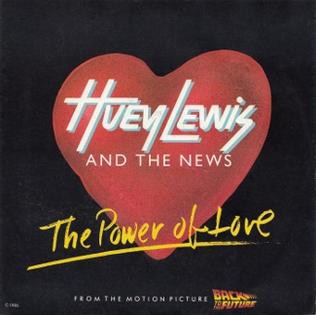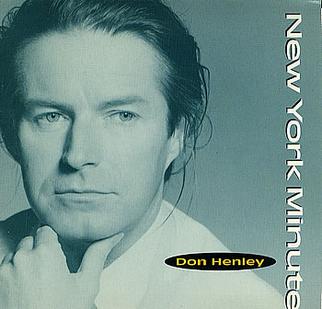 When Neil Young released “Rockin’ in the Free World” in 1989, the world was undergoing one of its most seismic transitions. The Berlin Wall was months away from crumbling, the Cold War was burning out, and America stood on the brink of a new geopolitical chapter. But Young, never one to bask in easy patriotism or shallow celebration, delivered a song that cut through the triumphalism with a scalpel of cynical rage. With its blistering guitar riffs and searing lyrics, “Rockin’ in the Free World” wasn’t a celebration of American greatness—it was a protest of its hypocrisies, a fierce indictment of the country’s failures, and a desperate plea for truth in a culture drowning in slogans.
When Neil Young released “Rockin’ in the Free World” in 1989, the world was undergoing one of its most seismic transitions. The Berlin Wall was months away from crumbling, the Cold War was burning out, and America stood on the brink of a new geopolitical chapter. But Young, never one to bask in easy patriotism or shallow celebration, delivered a song that cut through the triumphalism with a scalpel of cynical rage. With its blistering guitar riffs and searing lyrics, “Rockin’ in the Free World” wasn’t a celebration of American greatness—it was a protest of its hypocrisies, a fierce indictment of the country’s failures, and a desperate plea for truth in a culture drowning in slogans.
The track begins deceptively—acoustic, haunting, almost mournful. The minor chords ripple under a vocal that sounds tired but resolute. Then, as if jolted into consciousness by the weight of the message, the electric version kicks in like a thunderclap, propelled by crashing drums and Young’s signature fuzz-drenched guitar. It is a dual-version song—first reflective, then explosive—mirroring the conflict at its heart. By using two recordings of the same song on Freedom, Young doubled the emotional effect: we open with introspection, we close with revolution.
“Rockin’ in the Free World” was born out of frustration and irony. Young was touring with his band, and during a soundcheck, guitarist Frank “Poncho” Sampedro lamented that the band wouldn’t be able to tour Europe because, as he said, “We’ll have to keep on rockin’ in the free world.” The phrase stuck. Young, ever the antenna for cultural static, heard something deeper in it—a sarcastic jab at the empty nationalism that permeated the political air. That kernel of irony became the foundation for a song that would lay bare the contradictions of Reagan-era America, filtered through the looming presence of George H. W. Bush’s presidency.
From the very first verse, Young sets the tone with blunt force. “There’s colors on the street / Red, white and blue / People shufflin’ their feet / People sleepin’ in their shoes.” These are not the romantic images of the American Dream. These are stark vignettes of a society buckling under the weight of poverty and disillusionment. There’s nothing subtle about Young’s imagery—he doesn’t traffic in metaphor when he can hammer home the point with a grim tableau. He writes with a documentarian’s eye and a street preacher’s fury.
The second verse is even more direct, featuring one of the song’s most quoted lines: “We got a thousand points of light / For the homeless man / We got a kinder, gentler machine gun hand.” This is a direct shot at President Bush’s campaign rhetoric. “A thousand points of light” was a phrase Bush used to describe volunteerism and civic responsibility, a kind of feel-good bandage for systemic wounds. Young, however, peels the bandage off. He pairs that phrase with “a kinder, gentler machine gun hand,” evoking the sanitized language of American imperialism. It’s not enough to promise change or compassion—Young demands accountability for the disconnect between political platitudes and real-world suffering.
What makes the song so powerful is its refusal to conform to any one ideology. Young isn’t offering solutions, and he certainly isn’t aligning with any political party. He’s criticizing a national mood—one of apathy, contradiction, and hollow patriotism. The song is both a cry of despair and a battle anthem. That paradox is what keeps it resonant across decades. Young isn’t just rockin’—he’s raging.
The chorus, shouted rather than sung, becomes a form of reclamation. “Keep on rockin’ in the free world!” sounds sarcastic on first listen, a mocking echo of self-satisfied nationalism. But as the song builds, that phrase transforms. It becomes an act of defiance. Even if the “free world” is broken, even if it’s unequal and violent and drowning in consumerism, Young insists on rocking in it—not in celebration, but in protest. The guitar solo that follows isn’t polished or ornamental; it’s raw, jagged, bleeding. It sounds like a scream filtered through an amplifier. That’s no accident. Young’s style has always favored emotional truth over technical precision, and here, that choice becomes a political statement in itself.
By the late 1980s, Neil Young’s career had already spanned decades, moving through folk, country, hard rock, and the experimental landscapes of albums like Trans and Re-ac-tor. He had collaborated with Crosby, Stills & Nash, built a mythology with Crazy Horse, and maintained a fiercely independent vision. But the ‘80s were turbulent for him. Legal battles with his label and creative detours had dimmed his mainstream spotlight. Freedom, the album that housed “Rockin’ in the Free World,” marked a return—not just to form, but to ferocity. It reestablished Young as a prophetic voice in rock music, unafraid to confront the world around him.
The song’s influence spread quickly. While it never topped the charts, it became a staple of Young’s live shows and a defining track of his legacy. It has been covered by Pearl Jam (often with Young himself), used in political campaigns (both with and without Young’s blessing), and echoed in protest movements from Occupy Wall Street to anti-war rallies. That’s the mark of a true protest anthem—it transcends its moment and becomes a vessel for future anger, future hope.
Of course, the song has been repeatedly misinterpreted or co-opted by the very forces it critiques. In 2020, Donald Trump used “Rockin’ in the Free World” at campaign rallies, prompting Neil Young—who had long opposed Trump’s use of his music—to publicly denounce the act. The irony of a right-wing populist using a song that lambasts conservative rhetoric was not lost on Young or his fans. But such misappropriation only reinforces the song’s potency. Its meaning is not malleable. Its anger is not vague. “Rockin’ in the Free World” is not a blank canvas for feel-good nationalism. It is a Molotov cocktail hurled at the façade of American exceptionalism.
The production of the song is deliberately rough, even messy. The electric version crashes forward with a garage-band energy that belies the sophistication of its arrangement. Young’s guitar tone, famously achieved with his customized Fender Deluxe amp (“Old Black”), is grainy and visceral. The solo doesn’t soar—it snarls. The rhythm section pounds like a pulse on the edge of cardiac arrest. It feels alive in a way that polished rock rarely does. It’s protest music that doesn’t sound like it was made in a studio—it sounds like it was made in the street.
Lyrically, Young never retreats into abstraction. He talks about drugs, the environment, child neglect, economic inequality—all in a compact, three-verse format. One of the most haunting images in the song is of a woman giving birth and throwing the baby away, an allusion to crack addiction and systemic despair. It’s a brutal moment, and one that’s been criticized by some as overly graphic. But Young doesn’t write to comfort—he writes to disturb. He wants the listener to see what the free world looks like when you take off the patriotic blindfold.
There’s also an undercurrent of environmental anxiety in the lyrics. “Got Styrofoam boxes for the ozone layer,” Young sings, referencing the widespread pollution and environmental degradation of the time. That concern would grow more prominent in his later work, especially in albums like Greendale and The Monsanto Years, but it had roots in “Rockin’ in the Free World.” For Young, protest is holistic. It’s not just about politics—it’s about people, land, justice, survival.
Over the years, “Rockin’ in the Free World” has aged in a curious way. It’s a time capsule of late-’80s disillusionment, but its relevance has only deepened. The issues it tackled—corporate greed, homelessness, performative politics, environmental decay—have not only persisted; they’ve intensified. The digital age, income inequality, and climate change have added new layers to the song’s anger. Each generation hears the song differently, but the core emotion remains the same: frustration blended with a stubborn refusal to give up.
Young himself has continued to perform the song, often with slight lyrical modifications to fit the moment. Whether playing solo with an acoustic guitar or unleashing it with Crazy Horse, he treats it not as a relic but as a living organism. That’s the essence of protest music—it evolves, it adapts, but it never loses its edge.
“Rockin’ in the Free World” is not a call to arms in the traditional sense. It doesn’t rally behind a specific cause or wave a particular flag. Instead, it asks uncomfortable questions and forces the listener to confront them. It is both diagnosis and outcry, a howl from a man who loves his country enough to scream at it when it loses its way.
Unlike many protest songs that feel tied to a specific movement or political moment, Young’s anthem has a universal quality. Its critique is broad but not vague. Its rage is righteous but never smug. It’s a song that’s just as effective on a protest line as it is in an arena. It’s music for the disaffected, the disillusioned, and the defiant.
There is no resolution in the song. Young doesn’t offer comfort. The repetition of the chorus—“Keep on rockin’ in the free world!”—becomes more ambiguous with each pass. Is it an act of resistance? Of resignation? Of blind perseverance? Maybe it’s all three. But by the time the song ends, drenched in distortion and sweat, one thing is clear: this isn’t background music. It demands attention. It grabs you by the collar and shouts in your face.
And maybe that’s what makes “Rockin’ in the Free World” endure. It’s not just a song—it’s a mirror. A cracked, unflinching, feedback-drenched mirror held up to the heart of a nation that talks about freedom while ignoring its responsibilities. Neil Young, with his weathered voice and gnashing guitar, isn’t just singing about America. He’s interrogating it.
So we keep playing it. On radios, at rallies, in dorm rooms and dive bars. Because as long as there’s a free world worth fighting for—or at least pretending to—we’ll need songs that challenge it. Not to tear it down, but to wake it up.
And no one ever rocked it quite like Neil.


